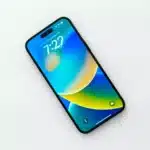
Is your iPhone charging but not displaying a lightning bolt? You’re not alone. Many iPhone users experience this frustrating issue. Whether it’s an issue with a dirty charging port or a faulty cable, understanding the root cause of the problem will help you fix it. In this blog, we’ll cover a variety of factors that can cause your iPhone to charge with no lighting bolt and provide you with effective solutions.
Why Is My iPhone Charging but Not Showing a Lightning Bolt?
The following issues can cause the lightning bolt to disappear when charging:
1. Dirty Charging Port
One of the most common culprits for your iPhone charging with no lightning bolt is a dirty charging port. Over time, dust can accumulate inside your charging port, and obstruct the connection between your device and the charging cable, which can prevent your phone from charging properly. To prevent this issue, gently clean your iPhone’s charging port with a soft brush or toothpick every two or three months.
2. Damaged Charging Cable or Adapter
Sometimes, your iPhone may fail to recognize a charger if the cable or adapter is damaged. That’s why you should check for visible signs of damage, like frayed wires or bent prongs. If your iPhone displays a “This Accessory May Not Be Supported” alert when you connect it to a charger, it could indicate that the charger is damaged or isn’t Apple-certified. In this case, you should consider using an MFi-certified cable to ensure safety and compatibility.
3. Loose Connection
If you have to adjust your charger’s positioning or wiggle its cable to charge your iPhone, it’s likely that the connection is too loose and may be a sign that the charger you’re using is incompatible with your device. That’s why, for iPhone users, Apple chargers are a safer choice.
4. Weak Power Source
All power sources are not created equal. When you plug your iPhone into a weak power source, such as an old laptop’s USB port, it might not charge properly. Even if it charges your iPhone, the charging process will likely be very slow. Using a reliable power source, like a wall outlet, is a better option.
5. Software Glitches
Software glitches caused by crashing apps, failed updates, and viruses can cause an iPhone to charge without showing a lightning bolt. Sometimes, software glitches can occur after a recent iOS update. When this happens, you can try restarting your iPhone to fix the problem.
6. Outdated iOS
When you use an outdated iOS, it can affect your phone’s ability to charge properly. Apple is always releasing new updates to fix bugs and improve your iPhone’s performance, so make sure your iOS is up-to-date in order to avoid charging issues. All you need to do is go to Settings>General>Software Update, and if you see any available updates, accept them.
7. Failing Battery
An old or damaged battery may prevent your iPhone from charging properly. Signs of a deteriorating battery include failure to charge to 100% and quick battery drain. To check your battery’s condition, go to Settings>Battery>Battery Health & Charging. If your battery’s capacity has dropped below 80%, Apple recommends replacing it.
8. Hardware Malfunction
In some cases, hardware issues such as water damage, cracks, and charging port damage can be the root cause of the problem. That’s why it’s important to be careful with your device. That being said, accidents happen, and when they do, a professional repair service can get your phone back up and running.
How to Fix Charging Issues in Your iPhone?
If you’re having trouble charging your iPhone, you can try these effective solutions:
1. Clean the Charging Port
It’s normal for dust and lint to build up in your iPhone’s charging port. These particles can block the connection between your charger and your phone, resulting in charging issues. If you see dirt inside your charging port, you can clean it using a cotton-wrapped toothpick or compressed air.
2. Check and Update iOS
An outdated iOS can sometimes cause charging issues, so you should check for updates regularly. You can check for software updates for your iPhone using iTunes on your computer or through the settings app on your phone.
3. Let the iPhone Cool Down
Overheating can cause charging issues and interfere with your device’s ability to function. If you notice your device getting excessively hot, you should turn it off, remove the case, and leave it somewhere dark and cool.
4. Replace Your Battery
Your iPhone’s battery health can greatly impact its charging performance. When the battery is at 80% of its original capacity, Apple recommends replacing it to avoid charging issues. To check your battery’s capacity, go to Settings>Battery>Battery Health & Charging.
5. Try a Different Charging Cable and Adapter
Low-quality charging accessories can cause charging issues in your iPhone. If your Apple-certified set is damaged, it’s not a good idea to buy non-certified accessories, as they may not be compatible with your device. Instead, you should replace damaged chargers and adapters with Apple-certified accessories.
6. Seek Professional Help
If you’ve already tried everything and your phone still isn’t charging, it’s time to get professional help. For reliable iPhone repair, you can visit Cell Phone Hospital’s repair center or call us to make an appointment. Our phone repair specialists will fix or replace damaged parts to restore your phone’s function. We provide fast, affordable solutions for charging issues and can have your device returned to you the same day.
Frequently Asked Questions (FAQs)
The following things can cause your iPhone to charge without increasing the battery percentage:
- A faulty charging cable or adapter
- Background apps that consume power faster than the device can charge
- Deteriorating battery health
- Software glitches
- An accumulation of dirt and debris in the charging port
Yes, the lightning bolt usually indicates that your phone is properly connected to a power source and charging. However, certain software and hardware issues can cause your iPhone to charge without a lightning bolt. If your iPhone is charging without a lightning bolt, you may need to repair it.
Here are some signs that may indicate your charging port is damaged:
- Your charger doesn’t fit or keeps disconnecting frequently.
- You can see visible damage inside or around your iPhone’s charging port.
- You can only charge your phone when you position your charging cable in a specific way.





